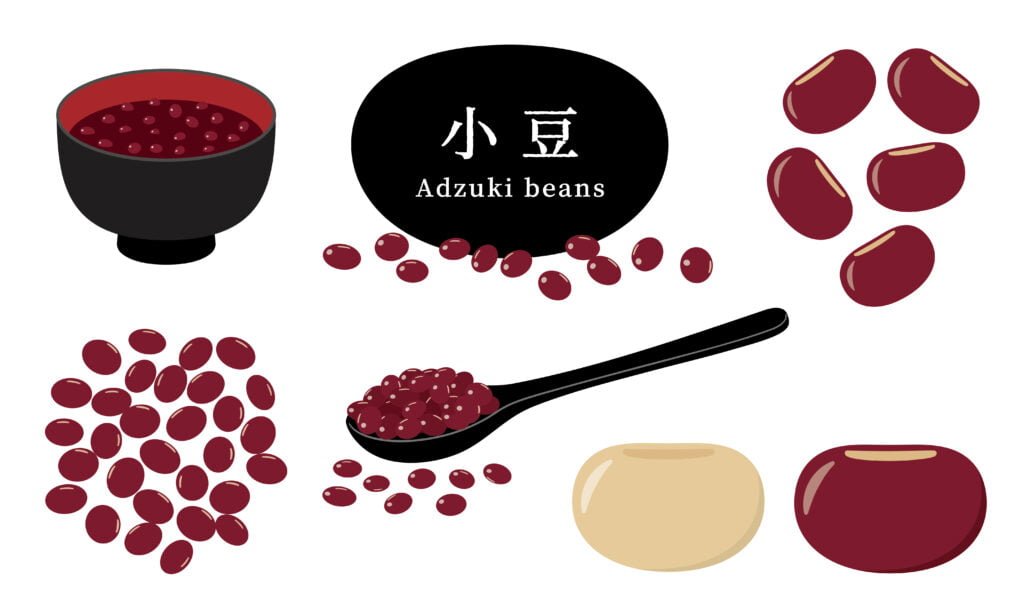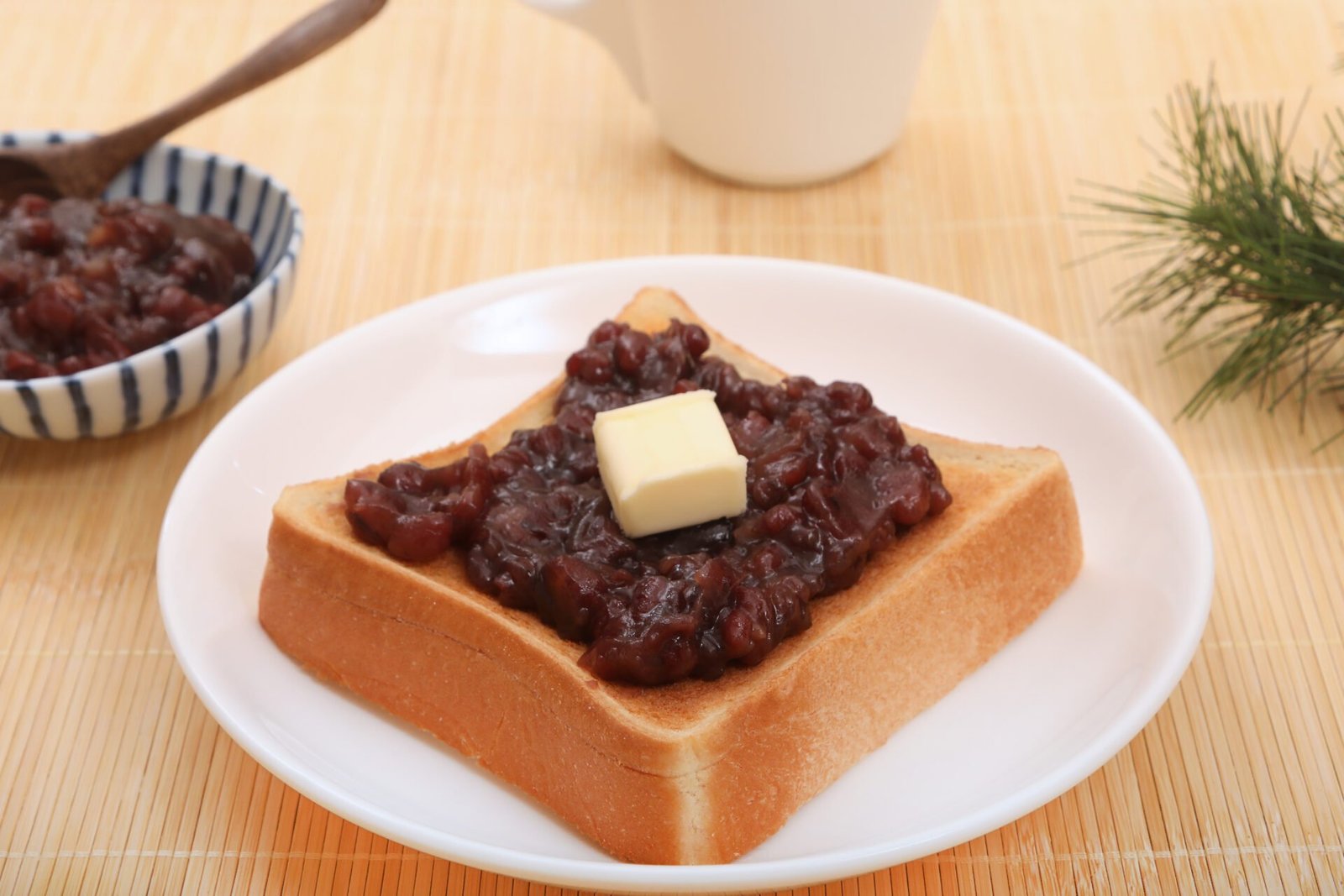Azuki Varieties: The Secret Behind Wagashi and Japanese Sweets Diversity
Azuki beans are the heart and soul of wagashi, the traditional Japanese sweets that have delighted palates for centuries. These small red beans play a crucial role in creating the distinct flavors and textures of numerous Japanese desserts. From the smooth anko in daifuku to the chunky paste in dorayaki, understanding azuki varieties is key to appreciating the diverse world of Japanese confectionery.”

Japan’s Major Azuki Varieties: Shaping the Flavors of Wagashi
Japan cultivates a diverse range of azuki varieties. Let’s look at the main varieties and their characteristics:
- Erimo Shozu: Developed in Hokkaido, this is currently the most widely cultivated variety in Japan. It’s characterized by uniform grain size and resistance to crumbling when cooked. It’s suitable for making wagashi, especially smooth bean paste (koshian).
- Kitano Otome: An improved variety of Erimo Shozu, it has higher yield and stronger disease resistance. Its flavor is similar to Erimo Shozu but is said to be sweeter.
- Dainagon: A premium variety known for its large grains and deep red color. It’s mainly used for coarse bean paste (tsubuan) and candied beans (kanoko mame). Its rich flavor is loved by many. More details about Dainagon will be explained in the next section.
- White Azuki: Unlike common red azuki, this variety has a pale yellowish-white color. It has a refined sweetness and unique flavor, mainly used in Kyoto-style wagashi.
Dainagon Azuki: The Premium Choice for Luxurious Japanese Desserts
Dainagon holds a special place in the Japanese confectionery industry as a premium azuki variety. It’s loved by many for its unique characteristics and historical background.
Production Regions and History: While Hokkaido currently produces the largest quantity, the Kansai region, especially Hyogo and Kyoto prefectures, has a long history of cultivation. The Kasuga area of Tamba City in Hyogo Prefecture is known as the “birthplace of Tamba Dainagon azuki” and has been famous for high-quality azuki since the Edo period. Tamba Dainagon azuki has a red skin, large grains, and a barrel-like shape. Its distinctive shape and flavor have been highly valued for centuries.
Uses and Characteristics: Dainagon is primarily used as an ingredient for coarse bean paste, but its uses are not limited to this. It’s also prized as an ingredient for products where “maintaining shape is important,” such as candied beans and sweet bean jelly. The large, well-shaped Dainagon beans bring visual appeal and texture to these products.
It’s also used in red rice, adding color and flavor to special occasion dishes. Widely used in wagashi-making and high-end restaurant cuisine where a sense of luxury is required, its rich flavor and texture are loved by many.
Cultivation Characteristics: Cultivating Dainagon requires advanced techniques and considerable effort. Due to its large grain size, the yield is lower than that of common azuki, and the cultivation period is longer. These factors contribute to the rarity and high price of Dainagon.
Regional Azuki: How Geography Influences Japanese Sweets
The main production areas known for azuki are Hokkaido, Tamba (Hyogo and Kyoto Prefectures), and Bicchu (Okayama Prefecture). Azuki produced in each of these regions has its unique characteristics.
- Tokachi, Hokkaido: This is Japan’s largest azuki production area. Taking advantage of vast lands and significant temperature differences, they mainly cultivate Erimo Shozu and Kitano Otome. Azuki from Tokachi is characterized by uniform grain size and resistance to crumbling when cooked.
- Tamba (Hyogo and Kyoto Prefectures): This area is known for producing the premium “Tamba Dainagon” azuki. Cultivated in the Tamba region of Hyogo and Kyoto Prefectures, it’s characterized by large grains, deep red color with luster, and rich flavor. It has long been associated with Kyoto’s tea ceremony culture and is prized as an ingredient for high-end wagashi.
- Bicchu (Okayama Prefecture): The Bicchu region has long been known for producing high-quality azuki. Particularly, “Bicchu White Azuki” is a rare white azuki bean known for its refined sweetness and unique flavor. It’s mainly cultivated in Takahashi City and Niimi City in Okayama Prefecture, from summer to autumn.
These production areas leverage their respective climate and soil conditions, along with accumulated cultivation techniques over many years, to produce high-quality azuki with unique characteristics. The azuki from each region is deeply connected to the local confectionery culture, serving as an important element supporting the diversity of Japanese food culture.
Hokkaido Azuki: Powering Japan’s Wagashi Industry
There are several reasons why Hokkaido, especially the Tokachi region, is Japan’s top azuki producer:
- Climate Conditions: Azuki prefers a cool climate. The summer in Tokachi is relatively cool with significant temperature differences between day and night, which is suitable for azuki growth. The dry climate with many sunny days during the autumn harvest season also contributes to improving azuki quality.
- Vast Agricultural Land: Hokkaido has vast agricultural lands, enabling large-scale mechanized farming. This allows for efficient production.
- Variety Improvement and Cultivation Technique Development: The Hokkaido Agricultural Research Center has been conducting variety improvements for many years. Varieties like Erimo Shozu and Kitano Otome, which have high yields and strong disease resistance, have been developed. Cultivation techniques are also advancing daily, contributing to quality and yield improvements.
- Established Crop Rotation System: In the Tokachi region, a 4-year crop rotation system including wheat, potatoes, sugar beets, and legumes (including azuki) has been established. This maintains soil nutrient balance and prevents continuous cropping damage.
- Well-Draining Volcanic Ash Soil: The soil in the Tokachi region is largely black soil derived from volcanic ash, which has excellent drainage. Azuki prefers well-draining soil, making this soil condition suitable for its growth.
However, even in Hokkaido with its vast land, azuki can’t be planted in the same field every year. This is because the soil becomes depleted after harvest. The method of planting other crops like wheat, vegetables, and sugar beets to return lost nutrients to the soil and avoid pests and diseases is called “crop rotation.”
While a 4-year rotation is common for regular azuki, varieties like Erimo Shozu are said to require twice as long, an 8-year rotation period. This need for long-term rotation has led to a yearly decrease in cultivation area, making varieties like Erimo Shozu rare. This labor-intensive cultivation method is one of the factors supporting the high quality of Hokkaido-produced azuki.These factors combined make Hokkaido, especially the Tokachi region, Japan’s top azuki production area.
Cultivating Quality: From Bean to Japanese Sweet
The quality of azuki is greatly influenced by cultivation methods and harvest timing.
In cultivation, proper soil and water management are crucial. Azuki is weak against moisture, so it’s cultivated in fields with good drainage. Appropriate sunlight and proper fertilizer management are also important.
Harvest timing also significantly affects quality. Fully ripened azuki turns a vivid red color, and the pods turn brown. Harvesting at the right time results in the highest quality azuki.
Selecting and Storing Azuki: Tips for Perfect Wagashi at Home
Lastly, here’s a simple azuki recipe you can make at home:
How to Make Simple Bean Paste (anko):
- Soak azuki beans in water overnight.
- Boil in fresh water for about 20 minutes.
- Discard the boiling water, add fresh water, and simmer until soft.
- Add sugar and simmer down.
- Continue simmering until you reach your desired consistency.
You can use this bean paste to make various wagashi like dorayaki or daifuku.
Azuki is an ingredient deeply rooted in Japanese food culture. By understanding its diverse varieties and regional characteristics, you can enjoy wagashi on a deeper level. Why not try tasting various types of azuki and enjoy their differences?
Understanding the diverse world of azuki varieties is key to appreciating the rich tapestry of flavors in wagashi and Japanese desserts. From the smooth, refined taste of Hokkaido’s Erimo Shozu to the luxurious texture of Tamba’s Dainagon, each variety contributes to the unique character of Japanese sweets. As you explore the world of wagashi, remember that behind every delicious bite is a carefully selected azuki bean, cultivated with care and transformed by skilled artisans into a piece of edible art.
